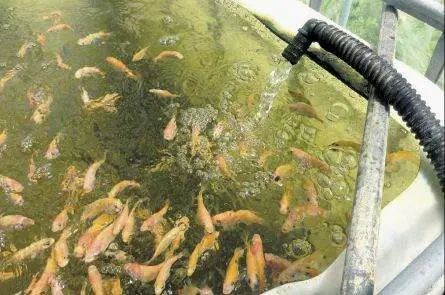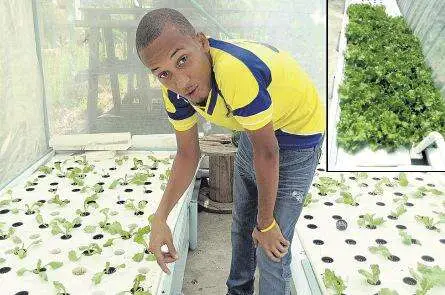
Growing lettuce with fish poop
IT started out as a class project a little over a year ago, but now university students Henkel Valentine, O’Brian Clarke, and Jovan Johnson have transformed their idea into a sustainable business with dividends not only for their pockets, but the environment as well.
It’s a greenhouse project at the University of the West Indies called The Taylor Hall Aquaponics Project which uses fish excrement to grow lettuce. The science of aquaponics is created by marrying aquaculture with hydroponics.
“The Taylor Hall Aquaponics Project was the subsidiary of an entrepreneurship class in 2011. Students at the time, myself, Johnson and Clarke decided we wanted to put some practicality into the idea. This is how the project started,” Valentine, spokesperson and project coordinator told the Jamaica Observer recently.
Valentine is a final year environmental biology undergraduate, Clarke is an occupational health and safety masters student, and Johnson is pursuing a masters in entrepreneurial agriculture.
The trio managed to secure funding to the tune of $150,000 to set up the operation. That, they maintain, was perhaps the hardest part of the process, as the daily maintenance of the project is not demanding.
“The mechanics of the system involves a fish tank which is stocked with fish, usually tilapia. The fish generate nitrogenous waste which is high in plant nutrients. The water in the tank containing the nitrogenous waste, which is toxic to the fish, is allowed to run in to a set of two filters which remove excess food particles,” Valentine explained.
“This water then runs into the growing beds which contain the plants floating on styrofoam rafts with their roots hanging in the water. The plants then absorb the toxic nitrogenous waste, which acts as fertilizer. The water is thus purified in the growing beds. This purified water runs into a hole which contains a water pump which pumps the water back into the fish tank,” he added.
While the concept is not unique, it stands a lesson in sustainability and is a model in water conservation as the volume of water applied at the start is constantly recycled and re-used. All that needs to be applied daily is food for the fish on the surface of the tank.
“This is also water efficient as there is no addition of water to the system once the plants have been added. The system is able to grow the fish and vegetables simultaneously while promoting healthy eating, as the vegetables produced are completely organic,” Valentine told the Observer.
According to the trio, the aquaponics project is capable of producing lettuce of higher quality than those grown in soil. This, they say, is as a result of the plants being consistently exposed to optimum water and nutrient conditions.
The team, with Clarke acting as operations supervisor and Johnson as technical expert, recently reaped its first crop of lettuce and sold it on campus at market price.


























